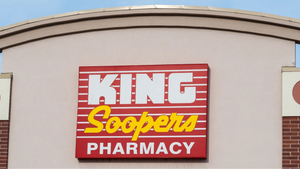Lidl readies rotating price-cut campaignLidl readies rotating price-cut campaign
Discount promotional efforts expanded to ease inflation’s grip on customers
September 22, 2022

Starting next week, Lidl is extending a discount campaign to cast a bigger net of savings for shoppers grappling with high grocery prices.
Arlington, Va.-based Lidl US said it plans to roll out price cuts on more than 100 items at all of its 170-plus stores, effective Sept. 28. The price drops will run throughout the fall and rotate on over 100 everyday items throughout the season.
A sample of discounted items range in price from $1.29 to $6.75 and reflected dollar savings of 20 cents to $1.04, according to Lidl. The price cuts run from 10% to 23%, with most around 11%.
 Products in the 25-item sample (see table on left from Lidl US) include pizza, lobster cakes, dessert bars, whole-bean coffee, shrimp risotto, salad dressings, cold-pressed juice, organic bread, a selection of tea, vegetable stir fry, cookie cups, puff pastries, Italian antipasti, Asian noodles and wheat biscuits.
Products in the 25-item sample (see table on left from Lidl US) include pizza, lobster cakes, dessert bars, whole-bean coffee, shrimp risotto, salad dressings, cold-pressed juice, organic bread, a selection of tea, vegetable stir fry, cookie cups, puff pastries, Italian antipasti, Asian noodles and wheat biscuits.
The new campaign signals an expansion from a June price-cut program that spanned over 100 items at all stores. In that effort, discounts ranged from over 10% to nearly 13% in a sample of 20 participating products.
Lidl noted that elevated inflation has hoisted grocery and food prices overall but mainly for staple goods, such as meat, grains, milk, frozen prepared foods and household products.
According to the latest Consumer Price Index, the food-at-home CPI edged up 0.7% in August, representing the first increase below 1% since April and down from 1.3% in July. However, the food-at-home index for August was up 13.5% year over year, topping the 13.1% rise in July and marking the largest 12-month gain since the period through March 1979, the U.S. Bureau of Labor Statistics reported. All six major grocery-store food group indices rose in August, both on an annual and a monthly basis.
“We recognize that inflation and rising food prices are impacting many families, and we hope to give more relief through this fall price-cutting campaign,” Stefan Schwarz, chief product officer and executive vice president of purchasing at Lidl US, said in a statement. “We are committed to offering all of our customers the best value in our stores every day, and we continue to invest in additional ways for customers to save money when we know it matters most.”
Lidl’s U.S. footprint stretches across nine states, including Virginia, Delaware, Pennsylvania, Maryland, New Jersey, New York, North Carolina, South Carolina and Georgia, and most recently the District of Columbia.
The limited-assortment value grocer came in sixth — behind Market Basket, Aldi, WinCo Foods, Grocery Outlet and Save A Lot — in a dunnhumby ranking of the top grocery retailers for inflationary times.
In the dunnhumby analysis, released earlier this week, Lidl was grouped in the Base Price Leader category, which also included such chains as Aldi, Market Basket, Grocery Outlet, Save A Lot and WinCo — all finishing high on the ranking list. Of grocery shoppers surveyed, 73% agreed that Base Price Leaders already had low prices without discounts.

“Typically, retailers who lean harder on base price and less on those other levers tend to outperform,” customer data science specialist dunnhumby explained in its report. “For example, base price market leaders such as Aldi, Lidl and Market Basket tend to have the most 2022 momentum and the best five-year sales CAGR [compound annual growth rate].”
Another grocer group, Lead Conductors, holds an advantage over Base Price Leaders in terms of leveraging customer data and personalization to offer relevant promotions and drive loyalty, dunnhumby said. However, the gap for Base Price Leaders isn’t significant, the study revealed. Sixty-five percent of shoppers polled agreed that Base Price Leaders offer a lot of items on sale, while 66% agreed that this retail group’s discounts are big enough, 64% said these chains tout low prices and 71% said their private brands save them money.
“While Lead Conductors also possess an edge in mass promotions, Base Price Leaders are not far behind,” dunnumby observed in its report. “A takeaway from these data points in mass promotions is that Base Price Leaders do in fact rely on mass promotions to drive price perception and are not solely relying on everyday low prices.”
About the Author
You May Also Like






